The last few centuries have seen incredible technological, engineering, and design advances, creating some of the world’s most iconic landmarks. Reflecting values and aspirations, architecture has always been a defining aspect of human civilization. From the towering skyscrapers of modern metropolises to ancient temples and monuments of past civilizations, the world’s architectural landmarks witness our creativity, ingenuity, and ambition.


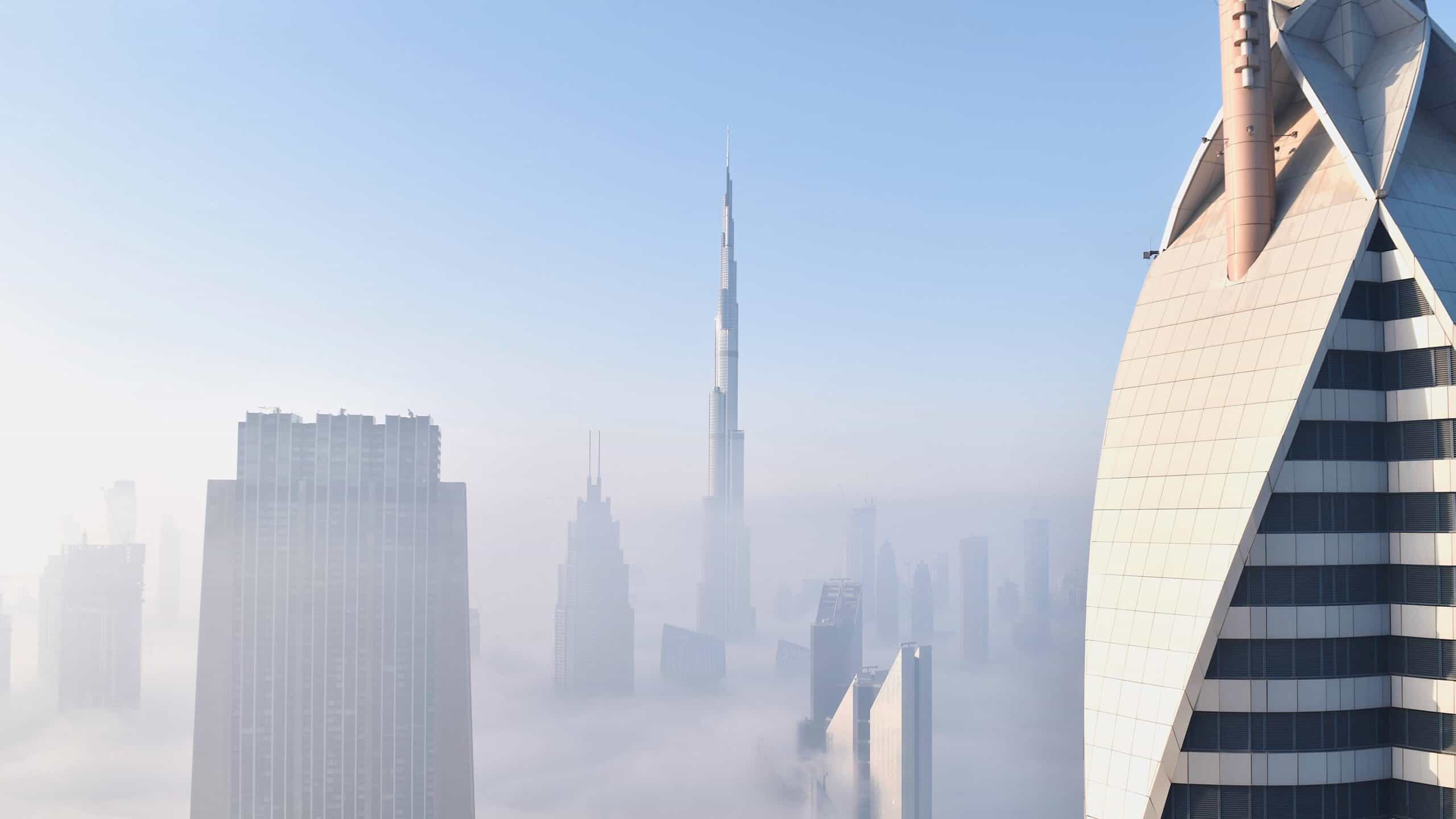
These are some of the world’s most iconic and awe-inspiring landmarks. From the soaring heights of the Burj Khalifa in Dubai to the elegant curves of the Sydney Opera House, these structures represent architectural excellence, combining aesthetics, function, and cultural significance in a unique and inspiring way.
If these landmarks could speak, what stories would they tell? There’s much to understand behind these icons, such as their cultural context and the creative vision of the architects who brought them to life. Each structure offers its essence and wonders, telling a unique story shaped by the times and societies that created it.
Join us on this architectural journey to explore some of the world’s most iconic landmarks and design masterpieces and discover the limitless possibilities of human creativity and imagination.
Burj Khalifa, Dubai
United Arab Emirates
Rising high above the desert sands, the Burj Khalifa is the world’s tallest building at an incredible 828 meters (2,717 feet). A marvel of modern design, its sleek and elegant structure is based on the geometry of a desert flower. It has three wings arranged in a Y-shape to maximize views of the Persian Gulf and a slender profile achieved through advanced engineering techniques and materials such as reinforced concrete and steel.
With heights that reach the sky, the building’s unique design has a pointed shape that reduces wind resistance. Similarly, a paneling system helps minimize the impact of the hot desert sun. The tower’s outdoor observation deck, At the Top is also a marvel of design, offering stunning views of the city and beyond.


Sydney Opera House, Sydney
Australia
Its beauty soars from a distance like a sailboat on the harbor, shimmering in the light. The Sydney Opera House is an icon in Sydney, Australia. Completed in 1973, this stunning structure is renowned for its innovative design and unique style. Designed by Danish architect Jorn Utzon, a shell shape inspired the building’s distinctive sail-like roof.
Its iconic shape was achieved through the use of precast concrete panels that were assembled like pieces of a jigsaw puzzle. The building’s roof comprises more than 1 million tiles, individually crafted to fit the complex curves and angles of the structure.
Within its halls, the building’s interior is equally impressive. Its design emphasizes natural materials and colors to create a warm and inviting atmosphere. The main concert hall features a stunning array of wood paneling and acoustic treatments that provide unparalleled sound quality, where music and art speak beautifully.


The Guggenheim Museum, Bilbao
Spain
A true gem in the heart of Bilbao, Spain’s Guggenheim Museum Bilbao is a stunning example of contemporary architecture. Completed in 1997, this iconic landmark was designed by Canadian-American architect Frank Gehry.
The building’s unique design, with its curving lines and metallic sheen, features titanium panels and a reflective surface that captures the surrounding landscape’s changing light and weather conditions. The project used advanced computer modeling and construction techniques to achieve its complex shape and intricate details. The result is a building that functions as a world-class museum and stands as a work of art in its own right.
Inside, a world of creativity, from modern to contemporary, is on display. The museum features a series of galleries around a central atrium, allowing visitors to navigate and explore the collection easily. The space also includes outdoor areas with iconic Puppy and Giant Flower sculptures that enhance the experience.
The design of the Guggenheim Museum Bilbao is a real achievement of contemporary architecture. It is a building that goes beyond its purpose, inspiring and captivating the human soul.
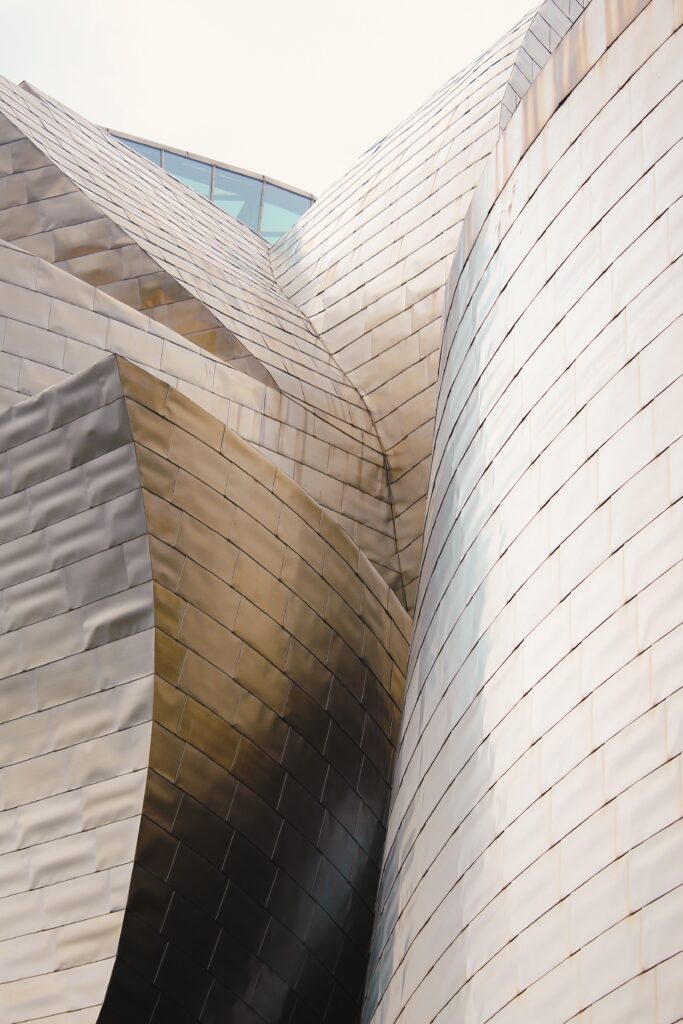

Petronas Twin Towers, Kuala Lumpur
Malaysia
With their sleek lines and glass facades, the Petronas Twin Towers in Kuala Lumpur, Malaysia, were once the tallest buildings in the world when they were completed in 1998.
A symbol of modernity designed by Argentine architect César Pelli, the towers stand on 88 floors. They are connected by a sky bridge at the 41st and 42nd floors and are the tallest twin towers in the world.
The towers’ design features a sleek and modern exterior with a stainless steel and glass facade that reflects the surrounding environment. The towers’ structural system combines reinforced concrete and steel to create the iconic double-tube structure, providing maximum strength and stability.
Inside, the towers are a marvel of innovation with advanced technologies. The high-speed elevators can travel up to 5.5 meters per second, taking you to the observation deck above—a fantastic spot to gaze out at the city with wonder and delight.


The Louvre Pyramid, Paris
France
Controversial when it was first unveiled in 1989, the Louvre Pyramid in Paris, France, is a stunning architectural masterpiece that stands as a symbol of art and history in the city’s heart. This iconic landmark was initially perceived as clashing with the historic architecture of the Louvre. Unquestionably, it became a bold and striking statement,
Designed by the architect I.M. Pei, the Louvre Pyramid serves as the entrance to the Louvre Museum, one of the most famous art museums in the world. Its design is intended to evoke a sense of grandeur and majesty. Blending seamlessly with its surroundings, Pei’s design was inspired by the museum’s existing architectural elements. These included the octagonal courtyard of the palace and the triangular shapes of the Louvre’s roofs.
Inside, it’s a world of wonder and inspiration, surrounded by some of history’s greatest works of art. Its striking geometric lines and shimmering glass facade, which seems to glow in the sunlight, draw visitors worldwide to marvel at its beauty.
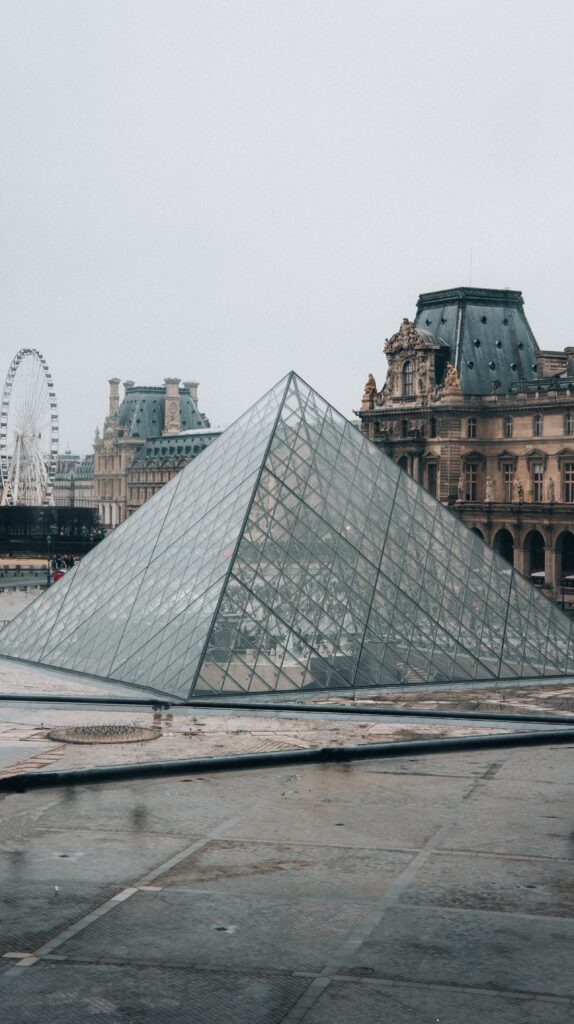

Marina Bay Sands, Singapore
Singapore
A wonderland of luxury, Marina Bay Sands in Singapore is a stunning example of modern architecture and engineering designed by renowned architect Moshe Safdie. The iconic three-tower complex stands at 55 stories. It has a distinctive design that is both visually stunning and functionally efficient, thanks to the use of advanced materials and technologies such as the world’s largest solar panel installation. The unique shape of the towers provides an optimal balance of structural stability and natural light. At its height, the SkyPark is a public park and a platform for energy-efficient cooling systems.
Inside, the complex features an array of world-class amenities. For instance, a luxury hotel, convention center, museum, and massive shopping mall. The most outstanding of all, nonetheless, is a massive rooftop infinity pool that creates a sense of floating, soaring high and offering spectacular views as the sun sets and the city comes to life.
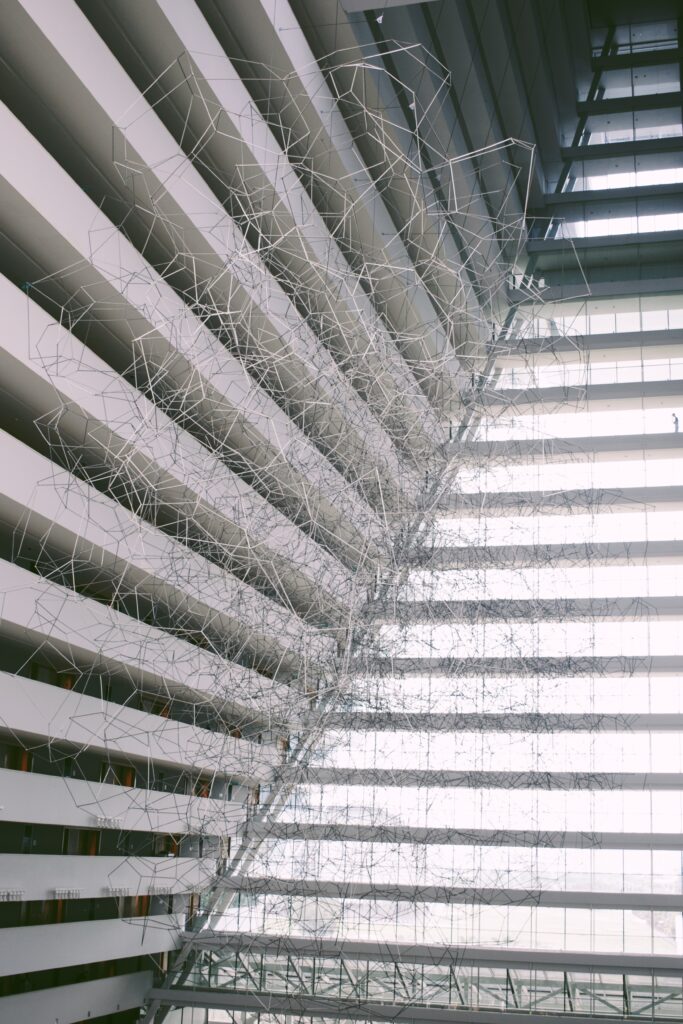

The Shard, London
United Kingdom
A marvel of glass and steel, The Shard in London, UK, is the tallest building in Western Europe. It has a unique jagged glass facade and a height of 310 meters (1,017 feet). It is a shimmering exterior that reflects the sky beautifully. The Shard’s design incorporates cutting-edge technologies, such as its glass cladding, which provides insulation and solar shading while allowing maximum daylight. The building also features an innovative steel frame with a tapered design that reduces wind resistance.
Created by Renzo Piano, the building’s design was inspired by London’s historic church spires and the masts of sailing ships on the nearby River Thames. Inside, The Shard accommodates offices, restaurants, and hotel rooms. Indeed, the project carefully considers the design of each space to maximize views and natural light. At the top of the tower, a viewing gallery offers panoramic views of London, further emphasizing the building’s focus on creating a connection between the city and its people.
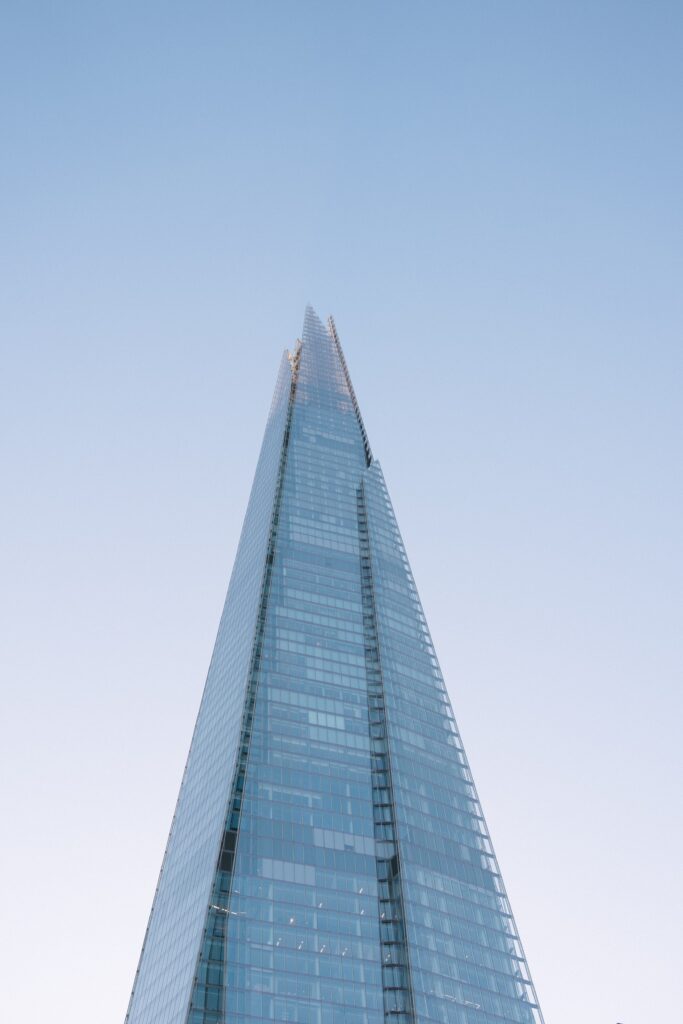

Sagrada Familia, Barcelona
Spain
Over 130 years in the making and still under construction, the Sagrada Familia in Barcelona, Spain, is a masterpiece of design created by the famous architect Antoni Gaudi. The building’s architectural style blends Gothic and Art Nouveau, a complex mix of geometric shapes, symbols, and religious motifs. The exterior is adorned with intricate sculptures and carvings that tell the story of the Bible. Instead, the interior features a forest of columns that support the vaulted ceiling.
The way the light pours through the stained glass windows creates a kaleidoscope of color. It transforms the space with the changing daylight, producing a beautiful and functional setting that blends tradition and innovation. It is, in fact, an inspiring architectural dream.
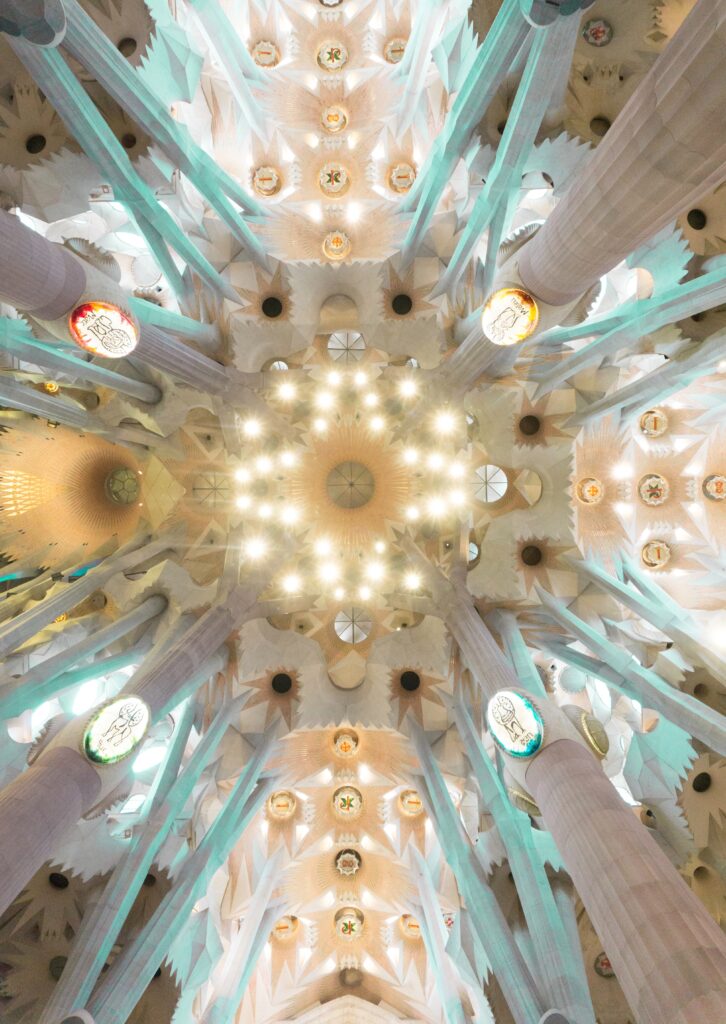

CN Tower, Toronto
Canada
Holding the title of the world’s tallest freestanding structure for over three decades, the CN Tower in Toronto, Canada, stands at 553 meters (1,815 feet). It is, indeed, a triumph of modern engineering and design. Completed in 1976, the tower’s design features a sleek, minimalist aesthetic with clean lines and a slender profile.
Nowadays, it is the center of telecommunications for Toronto, as well as a tourist spot. The tower offers panoramic views of Toronto and the surrounding region from the world’s tallest public observation deck, 447 meters (1,050 feet) above the ground. The design of the CN Tower has won numerous awards, and therefore, it has become an iconic symbol of Canada.


The National Centre for the Performing Arts, Beijing
China
Floating like a pearl on the waters of the surrounding water body, the National Centre for the Performing Arts in Beijing, China, is a true marvel of modern architecture.
Also known as ‘The Egg,’ its unique futuristic design with a vast dome and curved glass exterior creates a stunning visual effect by reflecting the surrounding landscape. Designed by French architect Paul Andreu, the NCPA has won numerous awards and has become an iconic symbol of Beijing’s cultural scene.
The interior of the building is equally impressive. It has three theatres and an underwater corridor connecting them, a marvel of design with sweeping curves and stunning visual effects. The main theatre, with its dramatic chandelier and curved walls, is a work of art. And the acoustics are among the best in the world, ensuring that every note and every sound is crystal clear. The building’s unique dome shape also helps to distribute sound evenly throughout the space, creating an immersive audio experience.
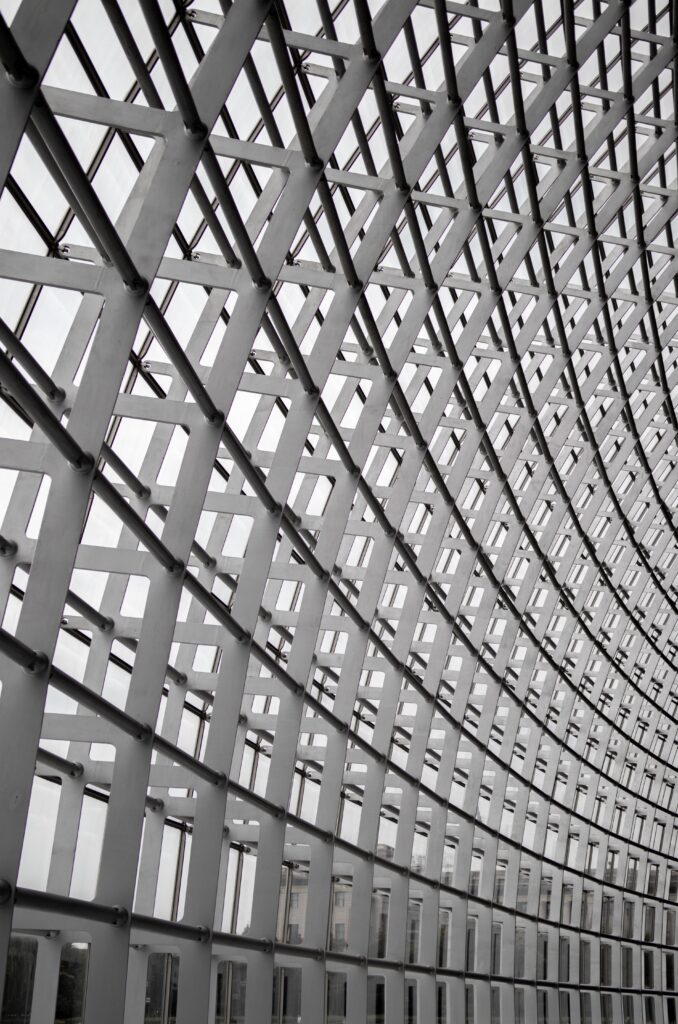
These are only some of the world’s most iconic landmarks and architectural masterpieces. Each icon is a true masterpiece of modern design and engineering. They represent the incredible skill and ingenuity of the architects, engineers, and builders who created the—testaments to human creativity, innovation, and sources of inspiration and wonder.


